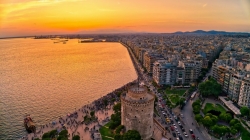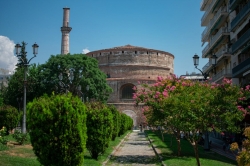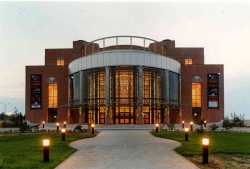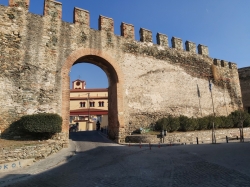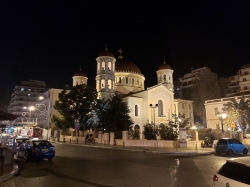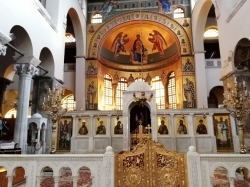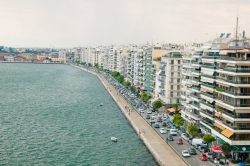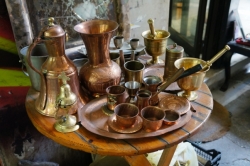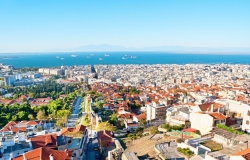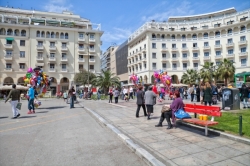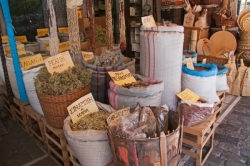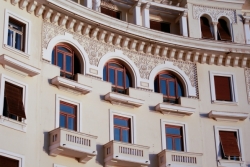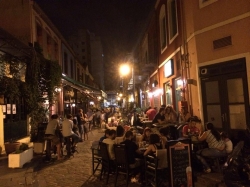Le nostre destinazioni più richieste
I nostri tour:
Common description
Between the West and the East
Thessaloniki, the second largest city in Greece, is an important cultural and commercial center. An elegant metropolis that boasts interesting museums and churches with splendid mosaics from the early Christian and Byzantine periods. In addition to its significant artistic heritage, Thessaloniki is a vibrant city with a youthful atmosphere, waiting to be discovered. It is the starting point for visiting the Chalkidiki Peninsula and the pristine Sporades Islands.
Halfway between Europe and Asia, Thessaloniki is an elegant city with a great historical heritage. It boasts over 2,300 years of history. Since ancient times, it has been an important communication hub between Asia and the Balkan Peninsula and over the years it has been dominated by Roman, Byzantine and Turkish rulers. The glories of these civilizations can still be traced in the streets of the city. Since 1988 its monuments have been included in the World Heritage by UNESCO. This city in Northern Greece is today a vibrant city, with cheerful cafes and a wide range of events, art exhibitions and concerts. It is a very important university center, with a high percentage of young people. An elegant and dynamic environment, very liveable - unlike the traffic of the capital Athens -, on the margins of European mass tourism.
What to see and what to do: our suggestions
The symbol of the city is undoubtedly the White Tower, an Ottoman-era building that overlooks the port, at the end of the very long and lively seafront. The name derives from the lime color with which the tower was repainted by the Greeks in 1913, to erase the traces of the massacre perpetrated in 1826 by the Ottoman sultan Mahmud II against Christian troops, accused of disloyalty. Inside, you can visit the Byzantine Museum. The historical monuments of Thessaloniki are the result of the legacy of a past of different dominations. The Arch of Galerius was erected in 303 AD, to celebrate the emperor’s victory over the Persians in 297 AD. Don’t miss the Archaeological Museum, which houses the treasure found in the tomb of Philip II (father of Alexander the Great) and the Derveni Papyrus, the oldest papyrus ever found. The entire center is full of Byzantine churches. The Cathedral of Agia Sofia is the metaphor of this city: first an early Christian temple, then converted into a mosque and now the center of Orthodox reference of the city. The Byzantine nature of the Greek mainland resonates very strongly in Thessaloniki.
Thessaloniki, the second largest city in Greece, is an important cultural and commercial center. An elegant metropolis that boasts interesting museums and churches with splendid mosaics from the early Christian and Byzantine periods. In addition to its significant artistic heritage, Thessaloniki is a vibrant city with a youthful atmosphere, waiting to be discovered. It is the starting point for visiting the Chalkidiki Peninsula and the pristine Sporades Islands.
Halfway between Europe and Asia, Thessaloniki is an elegant city with a great historical heritage. It boasts over 2,300 years of history. Since ancient times, it has been an important communication hub between Asia and the Balkan Peninsula and over the years it has been dominated by Roman, Byzantine and Turkish rulers. The glories of these civilizations can still be traced in the streets of the city. Since 1988 its monuments have been included in the World Heritage by UNESCO. This city in Northern Greece is today a vibrant city, with cheerful cafes and a wide range of events, art exhibitions and concerts. It is a very important university center, with a high percentage of young people. An elegant and dynamic environment, very liveable - unlike the traffic of the capital Athens -, on the margins of European mass tourism.
What to see and what to do: our suggestions
The symbol of the city is undoubtedly the White Tower, an Ottoman-era building that overlooks the port, at the end of the very long and lively seafront. The name derives from the lime color with which the tower was repainted by the Greeks in 1913, to erase the traces of the massacre perpetrated in 1826 by the Ottoman sultan Mahmud II against Christian troops, accused of disloyalty. Inside, you can visit the Byzantine Museum. The historical monuments of Thessaloniki are the result of the legacy of a past of different dominations. The Arch of Galerius was erected in 303 AD, to celebrate the emperor’s victory over the Persians in 297 AD. Don’t miss the Archaeological Museum, which houses the treasure found in the tomb of Philip II (father of Alexander the Great) and the Derveni Papyrus, the oldest papyrus ever found. The entire center is full of Byzantine churches. The Cathedral of Agia Sofia is the metaphor of this city: first an early Christian temple, then converted into a mosque and now the center of Orthodox reference of the city. The Byzantine nature of the Greek mainland resonates very strongly in Thessaloniki.

